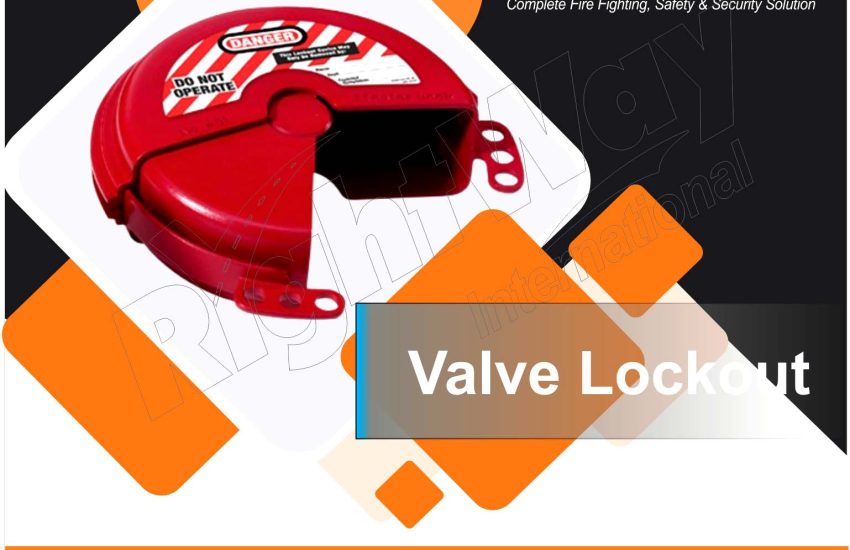Valve lockouts are critical devices used to ensure the safe isolation of valves during maintenance or repair work. By preventing unauthorized or accidental operation of valves, these lockouts play a vital role in industrial safety and regulatory compliance. This article explores the purpose, types, benefits, and applications of valve lockout, highlighting their importance in protecting workers and maintaining safe operational environments.
Purpose of Valve Lockouts
- Safe Isolation: Valve lockout are designed to securely lock valves in the closed or open position, ensuring that they cannot be accidentally or intentionally operated during maintenance or repair activities. This prevents the accidental release of hazardous materials or energy.
- Preventing Unauthorized Operation: By locking valves, these devices prevent unauthorized personnel from operating them, thereby reducing the risk of accidents and ensuring that only authorized individuals can manage critical systems.
- Regulatory Compliance: Valve lockout help organizations adhere to safety regulations and standards, such as those outlined by OSHA and other regulatory bodies. Proper use of valve lockout is a key component of effective lockout/tagout (LOTO) procedures.
- Enhanced Safety: Valve lockout contribute to overall workplace safety by ensuring that valves are securely isolated, thereby preventing accidental exposure to hazardous substances or conditions.
Types of Valve Lockouts
- Lever Handle Lockouts: These lockouts are designed for valves with lever handles. They fit over the handle and are secured with a padlock, preventing the handle from being moved and the valve from being operated.
- Ball Valve Lockouts: Specifically designed for ball valves, these lockouts cover the valve handle and lock it in place. They are often used in systems where ball valves are common, such as in industrial and chemical processing applications.
- Gate Valve Lockouts: Gate valve lockouts are designed to secure gate valves, which have a wheel-like handle. These lockouts cover the handle and can be locked with a padlock to prevent operation.
- Butterfly Valve Lockouts: Butterfly valve lockout are used to secure butterfly valves, which have a circular handle or lever. These devices lock the handle in place, ensuring that the valve remains in the desired position.
- Multi-Position Valve Lockouts: These lockouts are adjustable and can fit various types of valves with multiple positions. They provide flexibility for securing different valve configurations and are useful in complex systems.
- Custom Valve Lockouts: For unique or non-standard valve designs, custom valve lockout can be manufactured to fit specific requirements. These lockout are tailored to the exact specifications of the valve and its handle.
Benefits of Valve Lockouts
- Improved Safety: Valve lockouts ensure that valves cannot be inadvertently or unauthorized operated, reducing the risk of accidents and protecting workers from exposure to hazardous materials.
- Regulatory Compliance: By using valve lockouts, organizations can meet safety regulations and standards, ensuring that lockout/tagout procedures are followed and avoiding potential fines or penalties.
- Durability and Reliability: Valve lockout are built to withstand harsh industrial environments, with durable materials and designs that ensure long-term reliability and performance.
- Ease of Use: Valve lockouts are designed for easy installation and operation, allowing quick and effective isolation of valves during maintenance or repair work.
- Versatility: With a variety of types and sizes available, valve lockout can be used with different valve styles and configurations, providing flexibility for various industrial applications.
Applications of Valve Lockouts
- Industrial Facilities: In industrial settings, valve lockout are used to secure valves in pipelines, tanks, and machinery, ensuring safe isolation during maintenance and preventing accidental releases of hazardous materials.
- Chemical Processing Plants: Valve lockout are crucial in chemical processing plants to control the flow of chemicals and prevent accidental exposure or spills during maintenance activities.
- Oil and Gas Industry: In the oil and gas industry, valve lockout are used to manage the flow of oil and gas through pipelines and equipment, ensuring safety during repairs and operational changes.
- Manufacturing Plants: Valve lockout in manufacturing plants help to secure valves that control various processes, preventing accidental operation and ensuring safe maintenance practices.
- Utilities and Public Services: For utilities and public service organizations, valve lockout are used to manage water, gas, and other utility systems, ensuring safe isolation and compliance with safety standards.
Conclusion
Valve lockouts are essential tools for maintaining safety and compliance in industrial environments. By understanding the different types and benefits of valve lockout, organizations can effectively protect their workers and manage critical systems. Whether in industrial facilities, chemical processing plants, or utility services, valve lockout play a crucial role in preventing accidents, ensuring regulatory compliance, and maintaining a safe working environment.


